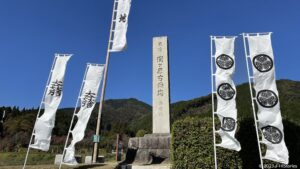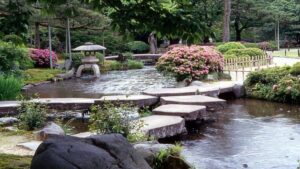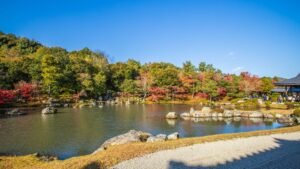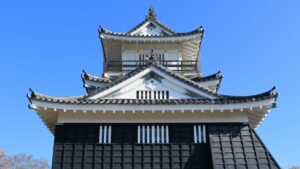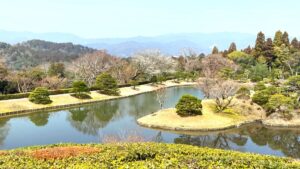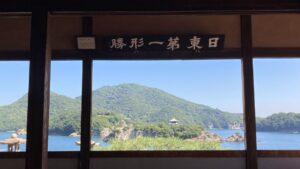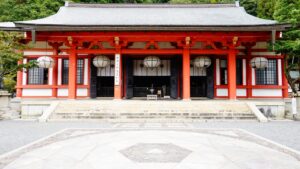Sanada Maru: Nobushige's Final Battle Against Tokugawa Ieyasu
The Sanada Red Armor represents the elite corps led by Sanada Nobushige, better known as Sanada Yukimura. Their armor, banners, and weapons were uniformly dyed in vivid shades of red or vermilion, symbolizing bold warriors. During the Siege of Osaka (1614-1615), Nobushige's forces repeatedly outmaneuvered the Tokugawa army, culminating in a daring charge into Ieyasu's […]
The Battle of Sekigahara
On 21 October 1600 (15 September 1600 in the Keicho era), the Battle of Sekigahara, the largest battle in Japanese history, was fought mainly in the Sekigahara area. The Eastern Army, led by Tokugawa Ieyasu (1543-1616, 徳川家康), about 70,000 to 80,000 soldiers, some of whom were loyal to Toyotomi Hideyoshi (1537-1598, 豊臣秀吉), clashed with the […]
Siege of Osaka: The Last of Toyotomi & Begining of Tokugawa Era
Toyotomi Hideyori, A Wise Man In 1598, Toyotomi Hideyoshi (1536-1598, 豊臣秀吉), who had risen from a peasant to become the ruler of Japan as regent, passed away, leaving behind his five-year-old son, Hideyori (1593-1615, 豊臣秀頼). In 1600, the Battle of Sekigahara broke out between Ishida Mitsunari (1560-1600, 石田三成), a loyal vassal of the Toyotomi, and […]
Kenrokuen, a Scenic Garden, the Maeda Clan's Survival Strategy
Kenrokuen garden in Kanazawa is a symbol of Maeda Toshiie, Toshinaga, and Toshitsune, the great lords who protected Kaga's one million koku domain against the Tokugawa Shogunate. Thier strategy was brilliant.
Tenryuji Temple, Shogun Ashikaga Takauji Mourned Emperor Go-Daigo
Located at Arashiyama, Shogun Ashikaga Takauji built Tenryuji Temple to mourn Emperor Go-Daigo. Sogen pond garden and Could Dragon painting are specutacler.
Hamamatsu Castle, Ieyasu's Journey of Building a Peaceful Era
Tokugawa Ieyasu (1543-1616, 徳川家康) was freed from his hostage of Imagawa Yoshimoto (1519-1560, 今川義元) defeated at the Battle of Okehazama, and took a step forward as the lord of Okazaki Castle. He put down the Mikawa Ikki riot and brought stability to the Mikawa region in 1645. Following the surrender of the Imagawa clan's Sunpu […]
Shugakuin Imperial Villa: Emperor Gomiziunoo's Villa Life
Shugakuin Imperial Villa is surrounded by a courtly atmosphere, and its beauty is beyond description. This magnificent villa was built by the 108th Emperor Gomizunoo (1596-1680, 後水尾天皇) after his abdication. Emperor Gomizunoo ascended to the throne at a young age as the Tokugawa Shogunate consolidated its solid political system in pursuit of a centralized feudal […]
Taichoro, The Most Beautiful Guest Room Admired by the Korean Envoy
The view from Taichoro at Fukuzen-ji Temple, a reception hall and the guest lodge for the Korean Envoy, is a dignified beauty like a picturesque landscape framed by wooden columns. This scenic vista extends to the Sensuijima and Benten-jima islands in the east, while the Shikoku Mountains are in the distance, overlooking the Seto Inland […]
Kuramadera Temple's Power Contributed Minamoto Yoshitsune to Winning the Genpei War
Kuramadera Temple, nestled deep in Mt. Kurama in the northern part of Kyoto, is renowned for its vortexes and the breathtaking natural beauty of trees that have grown over the years. Upon passing through the Niomon Gate, a meandering path guides visitors to the main hall. In the Heian period (794-1185), the esteemed female writer […]
Kiyomizu-dera Temple, Kannon Brought Victory to a Noble Warrior, Tamuramaro
Kiyomizu-dera Temple recognized as one of the Historic Monuments of Ancient Kyoto and a World Cultural Heritage site, was established halfway up Mt. Otowa in 778, merely six years before the capital relocation from Nara’s Heijo-kyo. The main image is the Eleven-headed Thousand-armed Kannon Bodhisattva, revered for aiding people from difficulties. The most enchanting feature […]


